
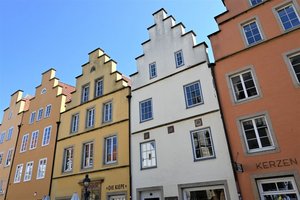
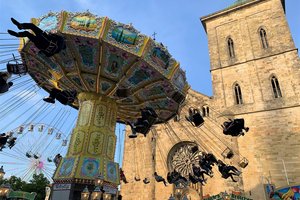
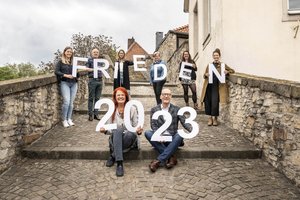
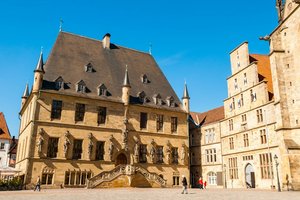
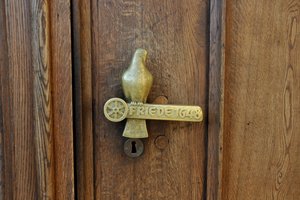

The Bürgerbrunnen (Citizens' Fountain), a bronze sculpture by the Osnabrück sculptor Hans Gerd Ruwe (1926-1995), has been on display on the Platz des Westfälischen Friedens since 1986. Ruwe designed other fountains and sculptures within the city, such as the "Steckenpferdreiter-Brunnen" at St. Catherine's Church, "die Waschfrau" at Vitihof or "das Tiergericht" at the zoo.
The citizens' fountain was donated by the citizens of Osnabrück in 1980 on the occasion of the 1200th anniversary of the city. The bronze, which is made up of 1200 individual parts, was commissioned from Ruwe. The fountain symbolises the history of Osnabrück by means of various scenic motifs. Even their orientation has a corresponding meaning: all figures leaning towards the town hall represent positive events. Figures pointing in the opposite direction take up negative events in the city's history. The fountain also consists of three bowls. The largest bowl represents the past. Osnabrück's city history flows through it in the form of water. Its size refers to the existing knowledge of the past. The water continues to flow into the middle bowl, which represents the present. It is connected to the past in that present events flow into the past. The smallest bowl symbolises the future. It is under the influence of the present. The mutual connection is seen as a reminder: the past influences the present and the present influences the future.
The fountain was originally intended for the market, which is why some figures, such as Barbarossa and Henry the Lion, are also inclined towards it.
Please inquire on the homepages or directly in the respective houses about the current opening and event times, prices, cancellations, etc.. This information can change at short notice!